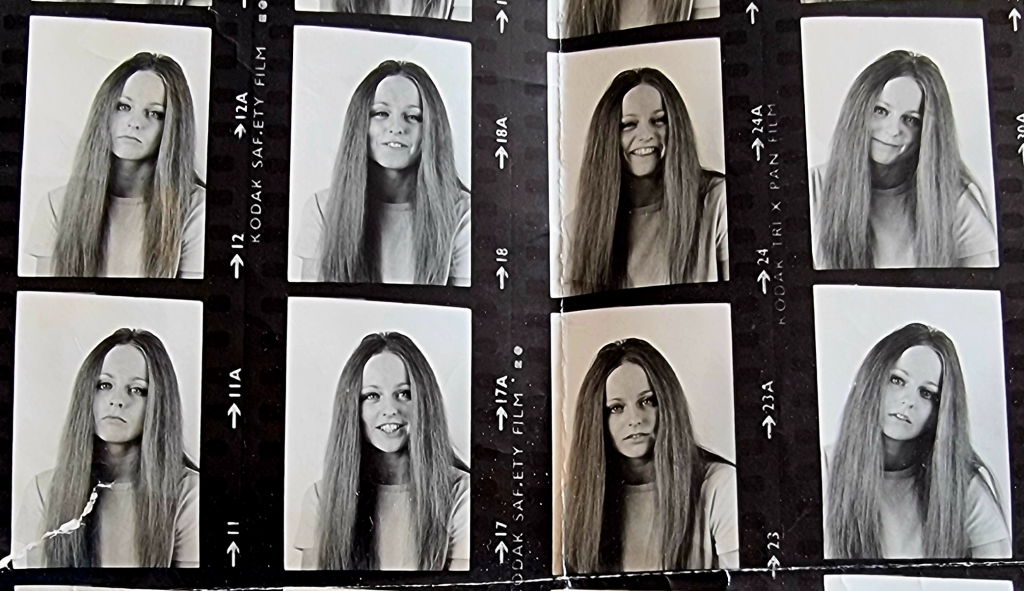
Among the many assistants who worked for Adrian Flowers over the years, Bob Cramp is one of several who stand out as photographers in their own right. Cramp began working in the studio around 1965. Initially he was a ‘first assistant’, tasked with helping Adrian. Soon however, he was showing more initiative, greeting clients, and discussing the shoot. Eventually he was setting up everything for the shoot. Understandably, Adrian began to place increasing confidence in Cramp, relying on him to take care of the difficult parts of a job, and coming to the studio when the photograph was ready to be taken. As soon as this was completed, Adrian and the client would go to lunch, while Cramp remained in the studio, supervising the development of the film. After a review of the negatives in the afternoon, there might be a final shoot. In addition to this work, Cramp took his own photographs, and in a series of negatives dating from 1967, Ann Mallett and two other assistants appear larking about, dressed in cowboy costumes—the costumes were from an advertising shoot for the clothing firm Acrilan and Borg. Eventually, both Adrian and Cramp agreed it was time for change, and so, with Adrian’s blessing and with Smirnoff as his first client, Cramp set up his own studio.
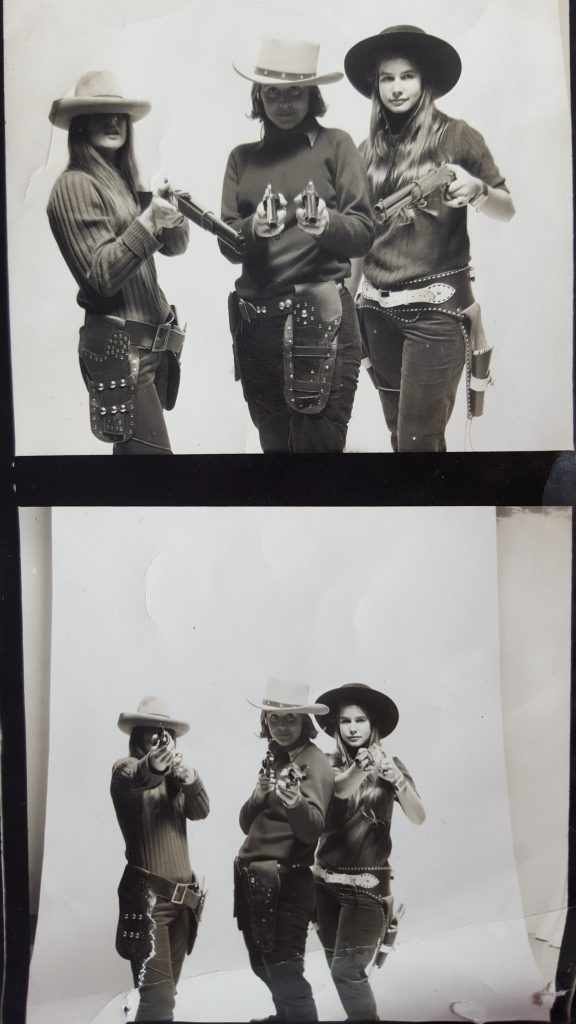
at Adrian Flowers studio.
Photograph by Adrian’s assistant Bob Cramp
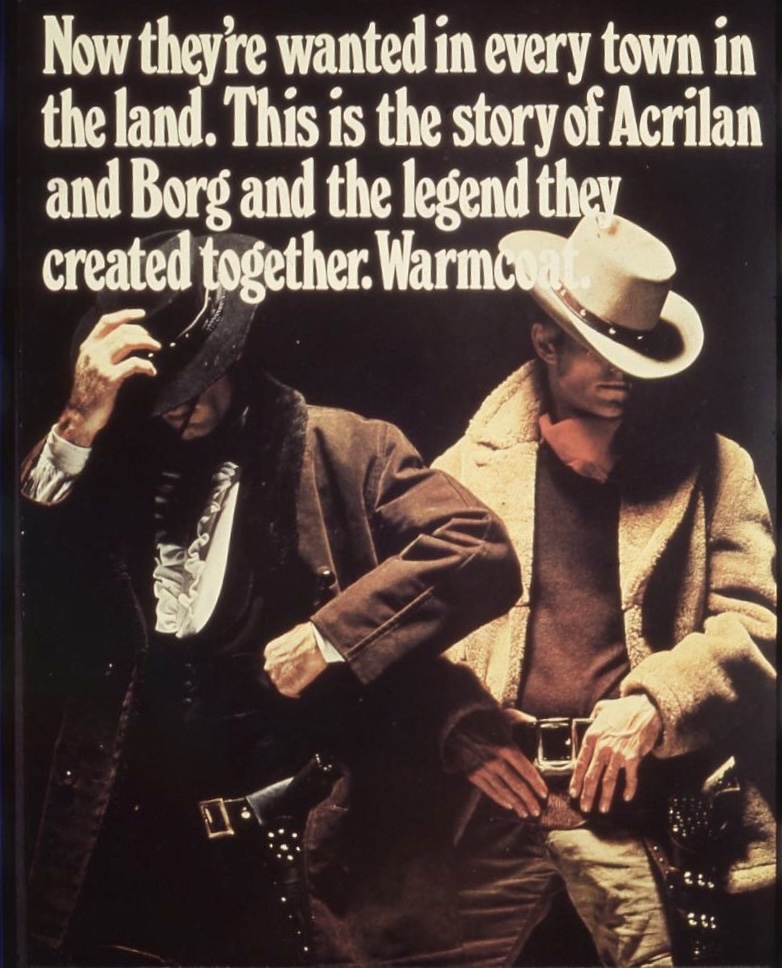
Photograph by Adrian Flowers
It was during Cramp’s time at the studio, that Ann Mallett (Kirsop at the time) had been interviewed for the job of second assistant. She had secured the interview through Jonathan Reynolds, a friend of her brother’s, who was working for Adrian at the time. Mallett was nineteen years old, and remembers the experience as a bit overwhelming, as, carrying her art portfolio, she was ushered into the room and asked to sit on a large Chesterfield sofa. Although Mallett had no formal art training, she was a keen semi-professional artist, who specialised in finely-drawn portraits. Her portfolio was whisked away by Ray Hawkey, who went through her drawings, while Adrian, sitting in a vintage dentist’s chair—one of the more eccentric features of the Tite Street studios—quizzed Mallett as to her qualifications for becoming an assistant photographer. Mallett recalls little of what was said, her attention being drawn to the large tank, full of tropical fish, that was Adrian’s pride and joy. Hawkey then returned and had a quiet word with Adrian, commending her artwork. She got the job.
This involved working in the dark room, and she recalls Aubrey Rix giving her a roll of film to develop, on the strict understanding that its contents were not to be disclosed to anyone. Apparently, the roll of film contained images of frolics involving Britt Ekland, Peter Sellers and Lord Snowdon. Mallett worked on several shoots for ad campaigns, including one for brandy. She remembers other employees at the studio, including “the fabulous Mrs. Wines, a real character”. Working at the studio inevitably led to relationships, and in spite of Adrian’s disapproval, Mallet and studio printer Alan Blake got together, and Adrian attended their wedding.
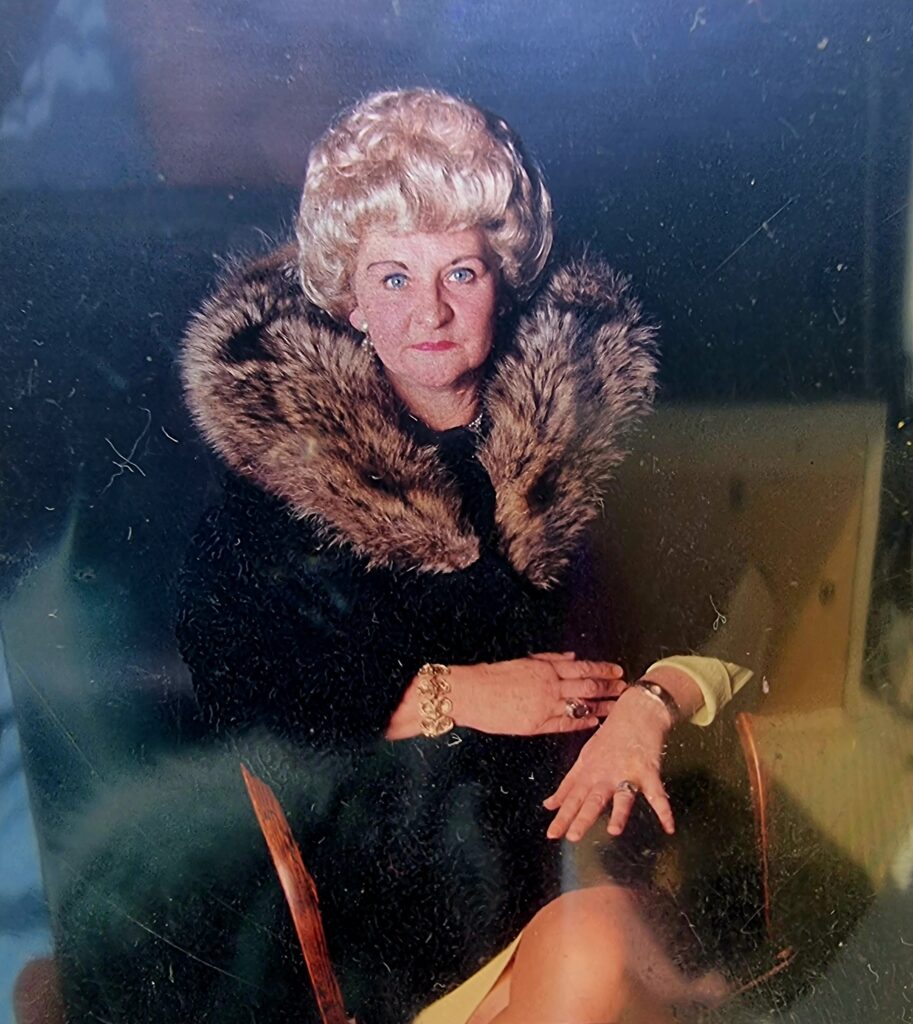
After a disagreement with another employee at the studio, Seigfried Kerson, who took it upon himself to act as a HR manager, both Blake and Mallett left. Initially they worked in Germany, before returning to England, where Mallett worked at an advertising studio in Merton. She and Blake then raised a family.
She recalls with tremendous affection working at the Adrian Flowers studio at Tite Street, the years there being “some of the most memorable and exciting of my life—we all loved Uncle Ade”.
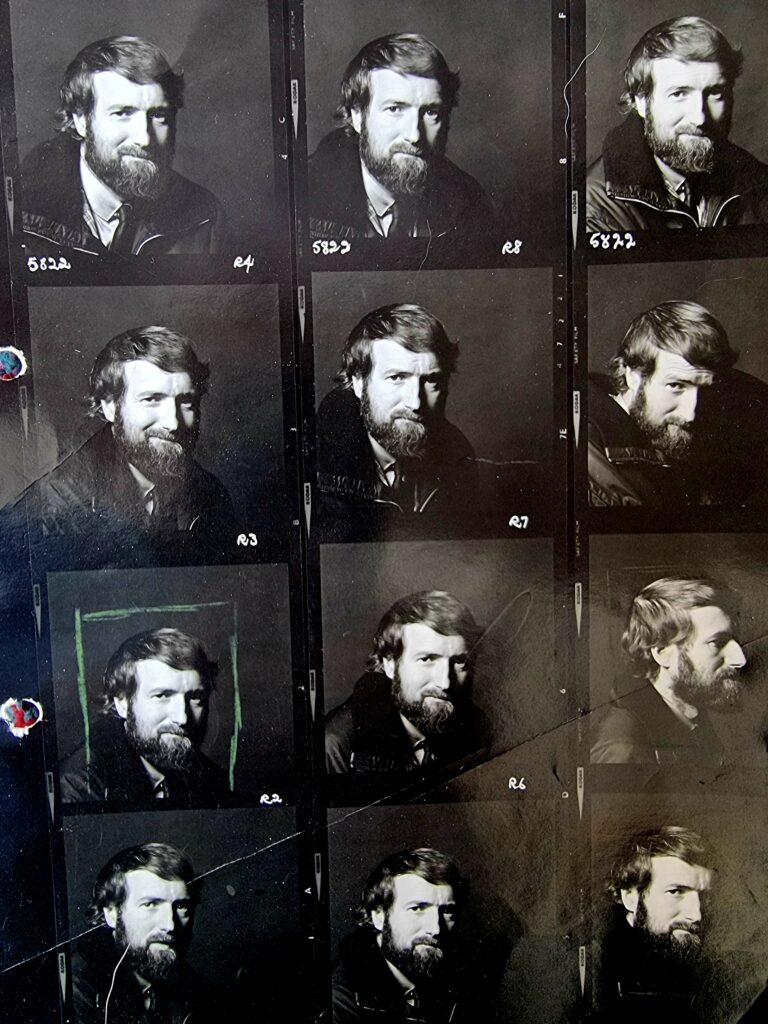
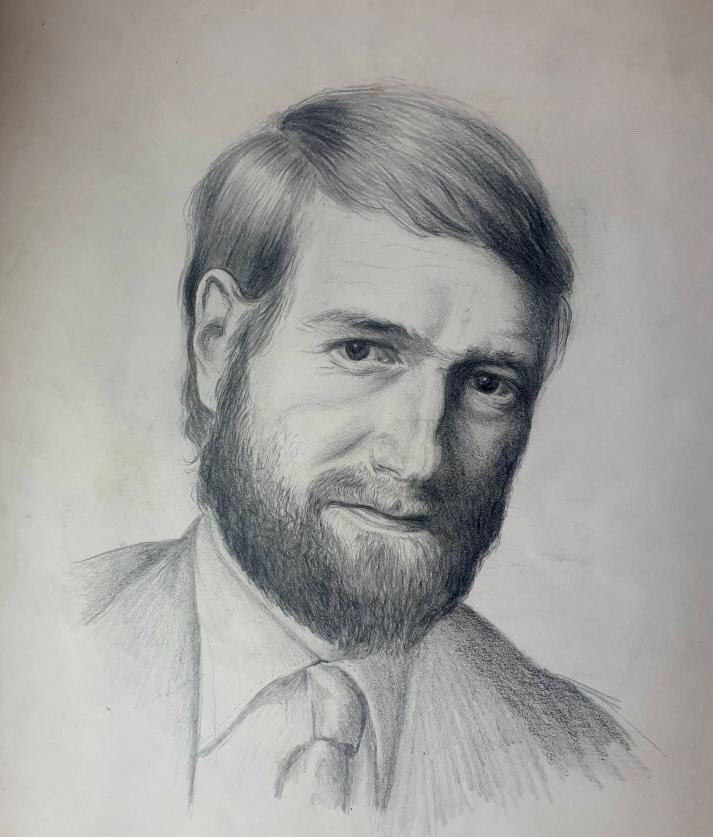
Text: Peter Murray
with thanks to Ann Mallett
Editor: Francesca Flowers
All images subject to copyright.
Adrian Flowers Archive ©